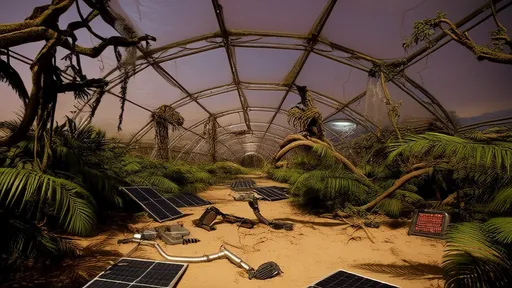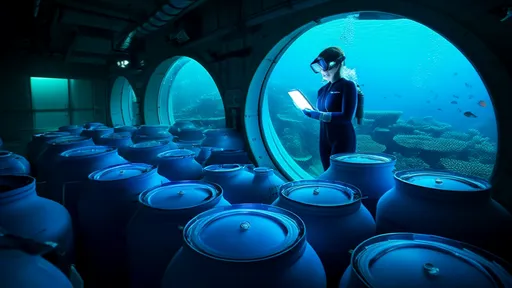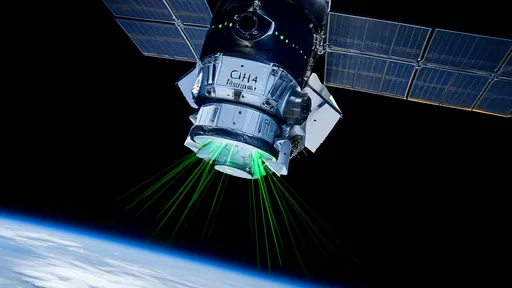The year 2100 looms as a pivotal milestone in human history, not for technological achievements or space colonization, but for a grim reality unfolding on Earth: the mass displacement of populations due to climate change. Recent predictive models paint a startling picture of global migration patterns, revealing how rising sea levels, desertification, and extreme weather events will redraw the map of human settlement. These projections aren't speculative fiction—they're data-driven forecasts based on current emission trajectories and climate sensitivity models.
The Silent Unfolding of a Humanitarian Crisis
Unlike sudden conflicts or political upheavals that dominate news cycles, climate migration occurs in slow motion—a creeping emergency that allows societies to look away until it's too late. Coastal cities from Miami to Mumbai face existential threats from sea level rise, while agricultural heartlands like the Central Valley of California or Pakistan's Indus Basin could become virtually uninhabitable due to water scarcity. The World Bank estimates that by 2050, over 140 million people could be displaced within their own countries due to climate factors—a number expected to grow exponentially by century's end.
What makes the 2100 projections particularly alarming is their nonlinear nature. Climate systems contain tipping points—thresholds beyond which changes accelerate uncontrollably. The disintegration of the West Antarctic Ice Sheet, for instance, could alone raise global sea levels by 3 meters, rendering entire island nations and coastal megacities uninhabitable. These aren't gradual changes that allow for orderly adaptation, but catastrophic shifts that force desperate migrations.
Regional Hotspots: Where the Map Will Change Most
South Asia emerges as the epicenter of climate displacement in nearly all models. The combination of glacial melt in the Himalayas, increased monsoon variability, and extreme heat could make regions home to over 800 million people nearly uninhabitable during summer months. Bangladesh, already grappling with annual flooding, could see one-third of its territory permanently submerged, displacing 35 million people by mid-century.
Sub-Saharan Africa faces a different but equally devastating scenario. Desertification coupled with decreased agricultural productivity could trigger massive movements toward coastal cities ill-equipped to handle such influxes. Nigeria, projected to become the world's third most populous country, could see its northern regions become uninhabitable while Lagos drowns under rising seas—a cruel pincer movement of climate threats.
In the developed world, the American Gulf Coast and Southeastern regions face particularly severe risks. Houston, New Orleans, and Miami could experience near-permanent inundation, while intensifying hurricanes make reconstruction cycles unsustainable. Unlike poorer nations, wealthier countries may attempt massive engineering projects—seawalls, elevated cities, even population relocations—but these come with extraordinary economic and social costs.
The Myth of Localized Impacts
A dangerous misconception persists that climate displacement will primarily affect the Global South, creating regional humanitarian crises that wealthier nations can observe from a distance. This ignores both the globalized nature of modern economies and the inevitable spillover effects of mass migration. When breadbasket regions fail, global food chains collapse. When megacities flood, worldwide financial systems tremble. And when hundreds of millions become displaced, no border wall will be high enough to stop the demographic pressure.
The European experience with relatively small-scale migration crises in recent decades foreshadows the political and social upheavals to come. Far-right movements, border conflicts, and the breakdown of international cooperation could become standard features of the 22nd century political landscape if proactive measures aren't taken. Climate models predict physical changes, but the secondary effects—resource wars, nationalist backlash, the collapse of multilateral institutions—could prove even more destabilizing.
Urban Archipelagos: The New Population Centers
Migration models consistently show the emergence of "climate havens"—regions with relatively stable conditions that will attract displaced populations. The Great Lakes region in North America, Scandinavia, Patagonia, and Siberia appear as likely destinations. These areas combine adequate water supplies, tolerable temperature increases, and lower exposure to extreme weather events.
However, this concentration brings its own dangers. Overcrowding in these "safe zones" could strain resources to breaking points, creating dystopian scenarios where climate refugees move from one disaster zone to emerging ones. The infrastructure of recipient regions—water systems, electricity grids, housing stocks—were never designed for such population densities. Without careful planning, climate havens could become pressure cookers of social unrest.
Some models suggest the emergence of entirely new urban centers in currently sparsely populated areas. Siberia's thawing permafrost, while an environmental disaster in itself, could make northern Russia a major migration destination. Similarly, Canada's northern territories might see unprecedented development as southern regions become less habitable. These shifts would radically alter global economic and political power structures.
The Ethical Quagmire of Climate Migration
Current international law has no framework for climate refugees—those displaced cross borders by environmental factors rather than persecution. The 1951 Refugee Convention becomes woefully inadequate when facing millions displaced by drought or rising seas. This legal vacuum guarantees future conflicts as nations debate obligations to accept environmental migrants.
Historical responsibility adds another layer of moral complexity. Nations that contributed most to cumulative emissions—primarily industrialized countries—will often be least affected by direct climate impacts, while low-emission nations face existential threats. This imbalance could fuel demands for "climate reparations" in the form of open migration policies, creating political backlash in recipient countries.
Perhaps the most disturbing ethical question involves those left behind. Migration always favors the young, healthy, and resourceful. What becomes of elderly populations, those with disabilities, or communities deeply tied to ancestral lands? Climate models can predict sea level rise but cannot quantify the cultural genocide of displaced populations losing their connection to place, history, and identity.
Beyond Prediction: The Narrow Path Forward
While the 2100 migration maps appear alarmingly consistent across models, they represent projections—not inevitabilities. The difference between orderly transition and chaotic collapse depends on actions taken today. Investment in climate-resilient infrastructure, managed retreat programs from vulnerable areas, and international agreements on migration could mitigate the worst scenarios.
Technology will play a role—from drought-resistant crops to coastal defense systems—but cannot substitute for reducing emissions. Every fraction of a degree in warming avoided translates to millions fewer displaced. Similarly, economic development in vulnerable regions increases adaptive capacity, proving that climate mitigation and poverty reduction are inseparable goals.
The maps of 2100 need not be horror stories if read as warnings rather than prophecies. They reveal not just where people will flee, but where we must fortify, where we must accommodate, and above all, what we must prevent. The greatest tragedy would be possessing this knowledge decades in advance and failing to act. Future generations will judge this moment—when predictive models became clear but responses remained inadequate—as the hinge point in humanity's climate reckoning.

By /Jul 2, 2025

By /Jul 2, 2025

By /Jul 2, 2025

By /Jul 2, 2025

By /Jul 2, 2025

By /Jul 2, 2025

By /Jul 2, 2025

By /Jul 2, 2025

By /Jul 2, 2025

By /Jul 2, 2025

By /Jul 2, 2025

By /Jul 2, 2025

By /Jul 2, 2025

By /Jul 2, 2025

By /Jul 2, 2025

By /Jul 2, 2025

By /Jul 2, 2025